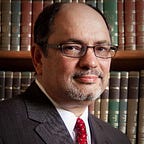History of New Year’s Day: Why on January 1?
HISTORY OF NEW YEAR’S DAY
We have the ancient Romans to thank for celebrating New Year’s Day on January 1. It wasn’t always that way. Indeed, previous civilizations celebrated it in March, to observe the “new year” of growth and fertility. Before calendars existed the time between seed sowing and harvesting was considered a cycle or a year. But the Romans moved the date of New Year to January 1, as I’ll explain below, but first a little on calendars.
Calendar gets its name from the name of the first day of a month in the Roman (Latin) calendar: kalendae
Calendars were developed for all kinds of purposes:
- Religious: “holy days” or holidays
- Astronomical: connecting the movement of objects in the sky
- Commercial: tracking trade and billing
- Arithmetic: for calculating differences between dates. Because there was no Year 0, the difference between 1 BC and AD 1 is not 2 years. Which is a challenge for Astronomical Calendars
- Social: to keep track of people on Facebook, LinkedIn, Twitter, Pinterest, Instagram, etc. It gives new meaning to the word “date”
Calendars often tracked the movement of the sun or moon or both. Some, like the Egyptians of antiquity, traced the movements of planets such as Venus. Setting the date for the universal observance of Easter has witnessed international controversy — including the Council of Nicaea in AD 325 — and caused several calendar reforms. If you don’t account for Easter, there are only 14 different permutations of the de facto international standard Gregorian Calendar, (named after Pope Gregory XIII who established it in 1582) now commonly in use. But because the date for Easter Sunday can vary so much — it’s the first Sunday after the first Paschal Full Moon after the Vernal Equinox, and let’s not forget Leap Year — there are 70 different calendars.
So, back to the date for New Year… originally it was celebrated late in March when Spring begins with the Vernal Equinox. The ancient Babylonians were the first recorded observers of New Year festivities some 4,000 years ago and celebrated it with the priests offering sacrifices at their temple, kind of like a church. These celebrations lasted for 11 days, due to the numerous state-sponsored football bowl games played at that time. But because there were also the priestly religious observances held at this time, it caused a cry from the populace for the “separation of church and state-championships.”
The Romans also celebrated the New Year in March, but there were so many adjustments to their calendar by their rulers, in part — this may be hard to believe — to extend their terms of office, that calendar dates no longer were synchronized with any astronomical movements. The Roman Senate was forced in 153 BC to start the new year on January 1. This did not sufficiently discourage calendar tampering, and in 46 BC Julius Caesar allowed the year to extend to 445 days, the “Year of Confusion,” until his new calendar reformed matters. It was called, ironically, the Julian Calendar.
When Christianity became the official religion of the Roman Empire in the 4th century, some Emperors continued holding riotous New Year’s celebrations, like “toga parties” but more authentic. In part to counter this activity, the Church established a holy day on January 1, the Feast of the Circumcision of Christ, also known as the Feast of the Holy Name of Jesus for the name Jesus would have been conferred upon his circumcision. Down through the centuries, it is still observed by Catholics, Lutherans, Episcopalians and some Eastern Orthodox sects. The jury is still out on whether this has quieted New Year’s celebrations.
Some are saying “I don’t want to see one more second of 2016.” However, this year there is an extra “leap second” to the year.
How will you use that time?
Bill Petro, your friendly neighborhood historian
www.billpetro.com
If you enjoyed this article, please consider leaving a comment, or subscribing to the news feed to have future articles delivered to your feed reader, or to your email. Click the 💚 below so other people will see this here on Medium.
